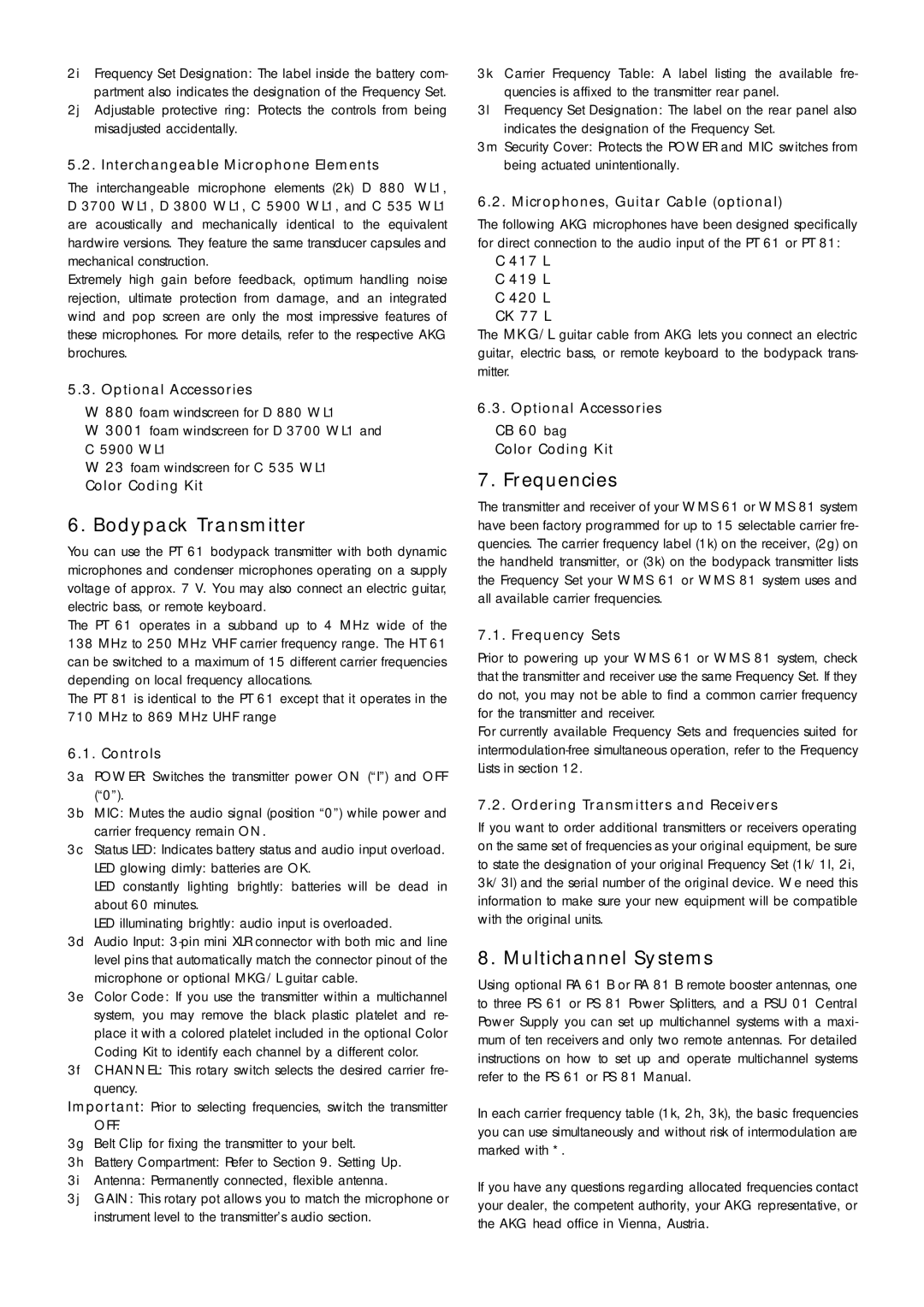WMS 61, WMS 81 specifications
AKG Acoustics is renowned for its excellence in audio equipment, and their wireless microphone systems, particularly the WMS 81 and WMS 61, are prime examples of their commitment to quality and innovation. Both models offer a range of features designed to meet the needs of performers and audio professionals alike.The AKG WMS 81 is a high-end wireless microphone system that excels in versatility and sound quality. It operates in the UHF frequency range, ensuring minimal interference and reliable signal transmission over long distances. One of its standout features is the adaptive diversity receiver, which helps eliminate dropouts and ensures a clear, consistent sound. The WMS 81 also incorporates automatic frequency selection, allowing for quick setup and optimal performance in any environment.
An important characteristic of the WMS 81 is its exceptional audio quality. The system utilizes advanced audio processing technologies, which include high-frequency response and low noise levels. This results in clearer and more articulate sound reproduction, whether for live performances or professional presentations. The microphone capsules are designed to capture a wide dynamic range, making them suitable for vocalists and instrumentalists alike.
On the other hand, the AKG WMS 61 is designed with simplicity and reliability in focus. It offers a more cost-effective solution while still incorporating quality features. Like the WMS 81, it operates in the UHF range and supports automatic frequency pairing, simplifying the setup process. The WMS 61 is known for its lightweight and ergonomic design, making it comfortable for extended use.
In terms of power management, both systems come equipped with innovative battery life indicators. The WMS 61 features a robust rechargeable battery option, ensuring extended performance without the need for frequent replacements. The WMS 81 can accommodate various power options, including alkaline and rechargeable batteries.
Both models also feature a robust metal chassis, ensuring durability in challenging environments, from stages to corporate events. The user-friendly interface provides easy access to essential controls, enabling users to navigate settings effectively.
In summary, the AKG WMS 81 and WMS 61 wireless microphone systems represent a significant advancement in audio technology, combining exceptional sound quality, efficient frequency management, and robust design. Whether you're a professional performer or a corporate presenter, these systems offer reliable solutions that enhance the overall audio experience. With AKG's commitment to quality, both models are sure to meet the demands of any audio environment.
